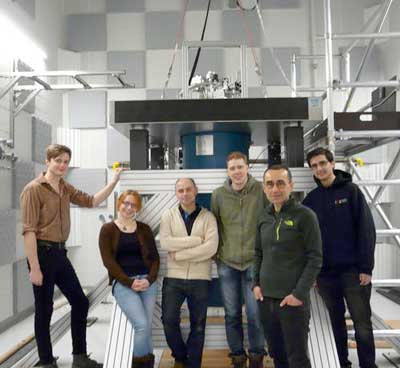| Posted: Feb 21, 2018 |
Researchers bring high res magnetic resonance imaging to nanometer scale
(Nanowerk News) A new technique that brings magnetic resonance imaging to the nanometer scale with unprecedented resolution will open the door for major advances in understanding new materials, virus particles and proteins that cause diseases like Parkinson's and Alzheimer's (Physical Review X, "High-resolution nanoscale solid-state nuclear magnetic resonance spectroscopy").
|
|
Researchers at the Institute for Quantum Computing at the University of Waterloo used a new type of hardware and numerical algorithms to implement high-precision spin control, which allowed them to image proton spins with a resolution below 2nm.
|
 |
| Raffi Budakian (second from right) with collaborators in his lab. (Image: University of Waterloo)
|
|
Traditional MRI revolutionized medical imaging and transformed our understanding of the structure and function of biological systems, but it is limited to millimetre resolution.
|
|
"This work extends the powerful capabilities of MRI to the nanometer scale and provides a whole new lens with which to view the structure and function of complex biomolecules," said Raffi Budakian, lead investigator on the paper and a professor in the Department of Physics and Astronomy at Waterloo.
|
|
The current work extends the capabilities of Magnetic Resonance Force Microscopy (MRFM) -- an ultra-sensitive technique for nanometer scale MRI -- by combining it with the ability to precisely control atomic spins.
|
|
"Now that we have a high degree of control on the spins, we can also apply the well-developed MRI techniques on an extremely small scale," said Budakian. "We now have unprecedented access to understanding complex biomolecules."
|

